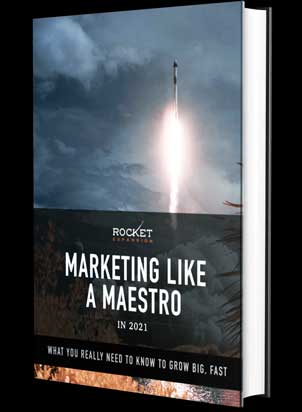10 Awesome Website Lead Generation Essentials (Every Business Needs)

Worried about the traffic to your website? Need more sales leads?
A solid lead generation system will work hard to keep your business healthy and out of the danger zone in 2021.
But wait,
What is a lead generation system, how does it work, and what are the essential qualities to look for in an effective website?
Buckle up, we have the answers you are looking for…
What is Lead Generation?
Lead generation is the process of generating consumer interest for a product or service with the goal of turning that interest into a sale.
In online marketing, this typically involves collecting a visitor’s contact information (also known as a “lead” or sales lead) via a web form.
Lead generation is the main function of the sales funnel for many B2B companies since their products can cost thousands of dollars and web visitors are less likely to buy their product or service directly from the website.
Gathering new leads allows the businesses to educate and nurture prospective clients through e-mail marketing, prior to reaching out to qualified leads directly via a sales team.
Generating leads is also important for eCommerce and other businesses, as e-mail marketing is still one of the most effective channels for marketing online.
Remember, collecting a prospective customer’s contact details allows the business to market to them at a later stage (even if they do not make a purchase immediately).
How Lead Generation Works
There are generally two main parts to the lead generating process:
A) directing traffic to your site, and
B) convincing them to share their contact information with you.
The first step is to find an effective way to attract prospects to your website.
Depending on businesses’ goals and budget restrictions, there are many ways to start attracting prospects to your site.
The following are some of the key methods ways which businesses use to drive traffic to their websites:
- Search Engine Marketing (SEM) – SEM is a form of online advertising that involves paying search engines (such as Google or Yahoo) to display ads in their search results. People primarily navigate the web by searching for things, so ‘paid search‘, could be a big source of traffic for your website.
- Search Engine Optimization (SEO) – Search engine optimization is similar to SEM, in that it involves getting traffic from search engines, but instead of paying search engines for ads, SEO involves optimizing your website for search engine algorithms so that it appears higher in the organic search results.
- Social Media – Social media sites (such as Facebook and LinkedIn) have grown to become some of the most popular sites on the web, and are beginning to rival search engines as major sources of traffic. You can drive traffic from social networks by posting content to social media platforms or paying for ads that run on these networks.
- Display Ads – This type of advertising comes in various forms such as audio, text, image, and video (one of the biggest forms of content consumed online). These ads can be purchased on relevant websites in order to drive that traffic to your own site, usually via Pay-Per-Click (PPC) models.
- Offline Events – Events such as industry conferences and meetups can be good ways to network with potential new customers, inform them about your brand, and get them to your website. These can be events that you attend as a guest, events that you sponsor, or events that you host yourself. These also give you the chance to give your prospective clients a product sample or extra (valuable) information about your product.
Once visitors start arriving at your site, the next step is to convert them into leads via an online form.
Directing customers to complete this online form can be done using many different lead-generating tactics. It can involve getting users interested in your product or service and getting them to submit their contact info, often through the use of an incentive (known as a “lead magnet”).
Here are common marketing strategies that businesses use to generate leads for their businesses:
- Content – Providing high-quality content in exchange for contact information is a common practice in lead generation. This content can be anything from a white paper, case study, or infographic to an ebook or exclusive video. The idea is to entice potential customers in your target audience with a piece of content that is relevant to your business and require them to provide their contact info before they can get access to the content.
- Webinars – A webinar is a live video session that your visitors can view and participate in. Webinars typically last between half an hour to an hour and provide information and educational material about a specific topic. Because webinars are interactive and require a big investment in time, they can be a great way to not only create a lead but also to educate and convert them.
- Landing Pages – This section gives the company an opportunity to unleash their best lead generating tool of all is your product. If you have a compelling product that solves a major pain point, visitors will want to provide their contact information even without any incentives. Presenting your product in the most attractive way is often done through landing pages, which help educate and convert prospective customers.
Landing page optimization is the key to making sure you are getting the most out of these pages.
Once a lead is created, if the customer is in the target market, the lead becomes a Marketing Qualified Lead (MQL) and the digital marketing team will begin nurturing the lead via marketing campaigns.
This nurturing process typically involves marketing automation campaigns to specific email lists to follow-up with content that helps to educate and persuade the prospects to eventually mature into sales leads.
After a lead has been nurtured, a prospect can be convinced to make an inbound purchase on the website or by reaching out to a salesperson, turning them into a sales-qualified lead. In enterprise sales, it is often the sales team that reaches out to the prospect to close the deal.
Now that you know what generating leads is about, you need these essentials (below) to really give your sales funnel that vital boost!
The 10 Essentials for a great lead generation website
1. Include a Contact Number
Ensuring that you’ve added a contact number to your website may seem counterintuitive, especially if you are selling a digital product.
Doing so, however, increases consumer trust and lends credibility to your product or service offer. Even if your customers don’t actually call, the presence of a phone number does bring them some comfort.
It shows the prospective client that your business is not afraid to have customers reach out, whether it is to purchase something, get more information or raise a concern.
2. Add Post Forms to Every Page
Making it easy to access the actual lead generating form is important in order to increase the number of viable leads through your website. The less information you ask for, particularly at the first step, the more likely people will be to part with their valuable personal details.
A form that is simple will also be attractive to prospects because it will likely save the user time. Ask the user for less and they won’t have to worry about wasting time or browsing for ages (which could be costly if they are on mobile data plans).
Customers are also more likely to share their personal details because they did not have to give out personal information at the first step.
Putting lead generation forms above the fold increases the likelihood that customers will notice them and fill them out, particularly if there are visual cues, like arrows, and an enticing offer such as a free quote.
3. Add Testimonials and Photos For Greater Credibility
Testimonials or reviews can be a powerful marketing tool, but adding photos or even rich media such as video or audio can take them a step further.
While the rich media versions may be too bandwidth-heavy for online lead generation websites, solid testimonials can have a powerful impact and lend support to your offer.
For example, the accounting software ‘Free Agent’ uses testimonials coupled with black-and-white photos, and large turnouts quote to greet effect on its pages.
4. Make Videos that Speak to the User
Online videos have the potential to bridge the gap between online and offline commerce. They can also greatly increase conversion rates for a wide range of industries particularly e-commerce websites.
The highest performing videos speak to the user rather than at them (personalization).
This can help make the potential customer feel as though they are engaging a human who cares about their issues, as opposed to some salesperson who merely wants to sell them something.
Online users who viewed a product video were much more likely to convert over users who simply viewed an ad. Videos help the user feel more informed and confident about their purchase.
5. Use Trust Seals – But Make Sure They’re More Than Just Eye Candy
All of the major trust seal providers claim that incorporating a trust seal on your website can increase leads, but the actual statistics are hard to come by.
Rather than installing a seal for pure visual security benefits, choose one that is backed up by a guarantee to the consumer, such as what OrientalFurniture.com did by using the BuySafe guarantee.
Customers who saw the seal were 7.6% more likely to buy it than those who did not.
For example, The BuySafe Guarantee protects customer purchases against identity theft and also guarantees delivery of items up to $500.
6. Use Power Words When Describing Your Offer
Power words are words that evoke emotion and can be used to motivate action.
Powerful action verbs such as “get”, “feel” and “have” are strong compellers because of their active tone as opposed to “imagine having”, “imagine feeling” and so on.
Using action-oriented words in your offer places the customer in a pivotal role as the one receiving the benefits as opposed to simply imagining them.
7. Keep your messaging consistent and deliver on your promises
The Lead Generation campaigns that convert the most are the ones that deliver on what they promise and create a smooth transition from ad copy and design to the deliverable itself.
It is important to make sure that you are presenting a consistent message throughout the process and providing value to everyone that engages with your lead capture.’
The information on your lead gen campaign should mirror everything else that is on your website, and within the product that you will eventually try to sell.
If this is not the case, you are likely to experience difficulties getting your lead to the next lifecycle stage.
Remember, the goal is not just to obtain an email address – you want to develop a new customer.
8. Consider the End-Goal First
When it comes to online lead generation, starting with the end in mind is key. What exactly does a “lead” mean to you?
Defining this will make your testing and analytics goals even clearer, and help you determine exactly what actions you want the user to take as they go through each stage of your sales funnel.
Is a lead just considered someone who fills out a form? Someone who signs up for a newsletter? Requests a callback?
Clearly define your starting point and you’ll have a much easier time adjusting your conversion goals accordingly.
It will also help you stay focused on the important factors of your conversion process and help you shape the picture of how your business should ideally be operating.
9. Measure the performance of each lead generator
There are many tools that can be used to measure the person of each of your business’s lead generators, such as Website Grader.
This tool evaluates your lead generation sources (as well as landing pages and calls-to-action) and provides feedback on how to improve your existing content.
You can also compare landing pages that are doing well against those that are not doing as well.
For example, if you are getting 1000 visits to Landing Page A, and 10 of those people fill out a form and are converted into leads, for Landing Page A, you have a 1% conversion rate.
Now let’s say you have another landing page, Landing Page B, that gets 50 visitors to convert into leads for every 1000 visits. That would be a 5% conversion rate (which is great).
Your next steps could be to see how landing page A differs from landing page B and then optimize landing page A accordingly.
Finally, you could run internal reports that evaluate landing page visits, CTA clicks, and thank-you page shares to observe which offers are performing best and make more like them.
10. The Bottom Line for Best Lead Generation: Test, Test, Test
None of these tips will do you a bit of good unless you test them for yourself and determine what works for your unique situation.
The number and quality of leads is a conversion factor just like any other – one which you’ll want to see an increase and improve over time. Here’s a handy checklist of other things to test to help improve conversion rates.
A lead generation page is also a great way to test crucial design changes before applying them sitewide. By split testing changes from one landing page to the next, you’ll be able to see whether or not your lead gen efforts pay off.
Of course, having the right testing and analytics software in place will help you determine exactly what’s working – with real-time data, historic timelines, trends, and conversion funnels that let you segment down to the smallest details.
Testing is the only true way to know exactly what works for your unique needs, but when designing your lead generation pages, keeping these best practices in mind can help you work less and convert more!
Closing Thoughts
Website Lead generation is still one of the best ways to acquire leads, generate high sales, and knock all business goals out the park in 2021!
Ensuring that you have your essentials in check is worth the effort and it’ll allow you to put your best foot forward in your efforts to generate and close all potential customer traffic to your website.
The year is still fresh, making this the best time to lock down, optimize your lead generating process and ensure that everything is in check for the new year. In so doing, it’ll be just a matter of time before you start seeing promising results!







